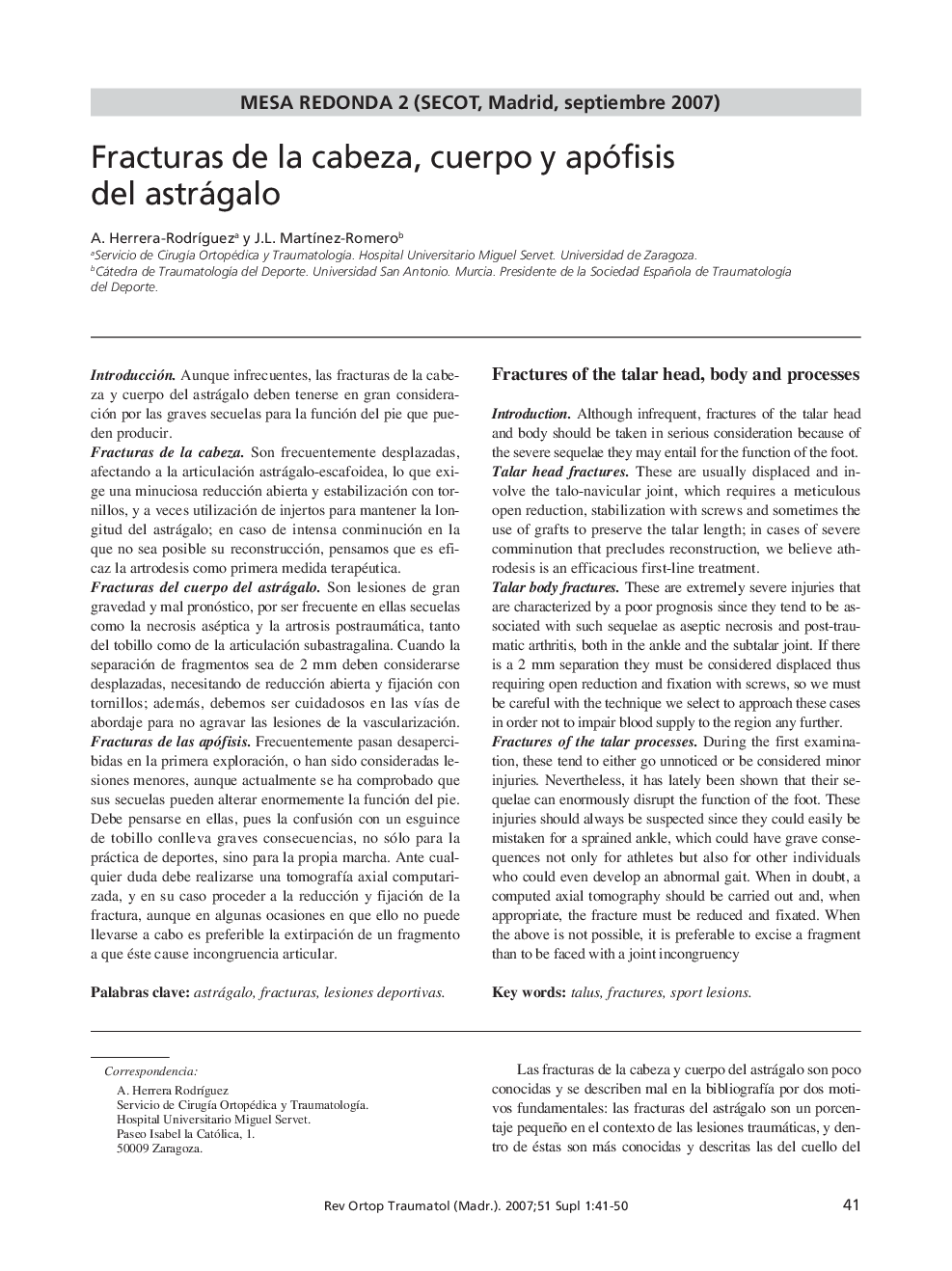| Article ID | Journal | Published Year | Pages | File Type |
|---|---|---|---|---|
| 4088026 | Revista de Ortopedia y Traumatología | 2007 | 10 Pages |
ResumenIntroducciónAunque infrecuentes, las fracturas de la cabeza y cuerpo del astrágalo deben tenerse en gran consideración por las graves secuelas para la función del pie que pueden producir.Fracturas de la cabezaSon frecuentemente desplazadas, afectando a la articulación astrágalo-escafoidea, lo que exige una minuciosa reducción abierta y estabilización con tornillos, y a veces utilización de injertos para mantener la longitud del astrágalo; en caso de intensa conminución en la que no sea posible su reconstrucción, pensamos que es eficaz la artrodesis como primera medida terapéutica.Fracturas del cuerpo del astrágaloSon lesiones de gran gravedad y mal pronóstico, por ser frecuente en ellas secuelas como la necrosis aséptica y la artrosis postraumática, tanto del tobillo como de la articulación subastragalina. Cuando la separación de fragmentos sea de 2 mm deben considerarse desplazadas, necesitando de reducción abierta y fijación con tornillos; además, debemos ser cuidadosos en las vías de abordaje para no agravar las lesiones de la vascularización.Fracturas de las apófisisFrecuentemente pasan desapercibidas en la primera exploración, o han sido consideradas lesiones menores, aunque actualmente se ha comprobado que sus secuelas pueden alterar enormemente la función del pie. Debe pensarse en ellas, pues la confusión con un esguince de tobillo conlleva graves consecuencias, no sólo para la práctica de deportes, sino para la propia marcha. Ante cualquier duda debe realizarse una tomografía axial computarizada, y en su caso proceder a la reducción y fijación de la fractura, aunque en algunas ocasiones en que ello no puede llevarse a cabo es preferible la extirpación de un fragmento a que éste cause incongruencia articular.
IntroductionAlthough infrequent, fractures of the talar head and body should be taken in serious consideration because of the severe sequelae they may entail for the function of the foot.Talar head fracturesThese are usually displaced and involve the talo-navicular joint, which requires a meticulous open reduction, stabilization with screws and sometimes the use of grafts to preserve the talar length; in cases of severe comminution that precludes reconstruction, we believe athrodesis is an efficacious first-line treatment.Talar body fracturesThese are extremely severe injuries that are characterized by a poor prognosis since they tend to be associated with such sequelae as aseptic necrosis and post-traumatic arthritis, both in the ankle and the subtalar joint. If there is a 2 mm separation they must be considered displaced thus requiring open reduction and fixation with screws, so we must be careful with the technique we select to approach these cases in order not to impair blood supply to the region any further.Fractures of the talar processesDuring the first examination, these tend to either go unnoticed or be considered minor injuries. Nevertheless, it has lately been shown that their sequelae can enormously disrupt the function of the foot. These injuries should always be suspected since they could easily be mistaken for a sprained ankle, which could have grave consequences not only for athletes but also for other individuals who could even develop an abnormal gait. When in doubt, a computed axial tomography should be carried out and, when appropriate, the fracture must be reduced and fixated. When the above is not possible, it is preferable to excise a fragment than to be faced with a joint incongruency.
